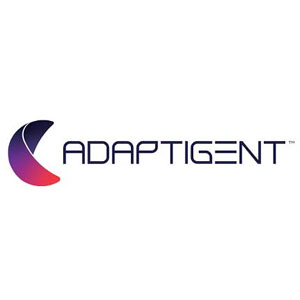The year is 2033. We’re in the future, and it looks a lot like today. There are no flying cars or immortality pills. Behind the scenes, technology continues running, with the amount of data generated growing year-over-year. Here are a few predictions for what mainframes could be up to in 10 years.
Containerization and elastic cloud computing will be the norm.
Ten years ago, mainframe migration to another platform was a possibility, but not a reality. Today it’s possible, and with containerization and elastic cloud services, we anticipate many more moves. Refactoring any language into another language—and then putting it on a platform that can do the same thing as a mainframe—is a high-cost and high-risk discussion. Risk may be the sole factor that inhibits migration from the mainframe.
We believe that mainframe migrations will increase in popularity, but not in cost. With elastic cloud computing, it’ll be the norm for business IT teams to add or release processing, memory and storage resources to meet business needs. And since companies will only pay for the resources they consume, the C-suite will support this transition.
This fundamental transformation of enterprise computing offers enormous benefits. We predict it will get easier and faster to migrate, with costs being the major driver.
Mainframes will go virtual—and few will notice.
In the future, most mainframes will be virtualized. IBM is already virtualizing mainframes and making them so you can run other workloads on a mainframe. In the future, companies will run JAVA in the IBM Cloud or Linux on Z. Businesses will increasingly switch to a data center provider that’s. People won’t know they’re using mainframes, and they won’t care if it’s a virtual mainframe in Indiana or India.
With this, mainframes will move from multiple dispersed sites to a few mega data centers hosting upwards of 100 mainframes virtualized. Mega data centers will run parallel instances, so if a New York site goes down, São Paulo will pick up without a glitch. Even true mainframe customers might not have a piece of hardware on premises within the next decade. They’ll run mainframes from a datacenter—and gain more reliability in the process. DXC and Sirius (CDW) already host mainframe apps in their data centers.
It may take more than 10 years to convince people to leave popular and comfortable cloud services. But in the end, it will come down to price, and the mega data centers will win.
Security will be integrated, not added.
According to a 2022 Forester Report, 91% of organizations with mainframes experienced a compromise or breach of sensitive data in the last five years, though mainframes weren’t specifically breached. The mainframe is one of the most critical systems to business operations, yet it is often overlooked in security strategies. And that’s a problem, with only 29% of companies taking steps to secure their mainframes.
Exposing the mainframe isn’t as isolated as it was in the past. A Business Wire reports a surge in companies developing APIs, both internal and external facing. When companies expose the mainframe to the outside world, APIs bypass the middle layer of security and connect internal business layers to partner APIs and third-party APIs. Each exposure adds risk.
Yet it’s precisely these API exposures that companies benefit from. Rather than stopping real-time access to data and transactions, the future will focus on controlling how companies expose the mainframe.
Adaptigent Adaptive Integration Fabric (Fabric) adds an extra layer of protection between APIs and the mainframe. The software supports inbound and outbound calls and works both on and off a mainframe. Plus, it requires no technical knowledge of applications or data sources. The Fabric server enables you to rapidly develop real-time interfaces. Since it sits between the APIs and the mainframe, you can lock down and limit API access.
We predict that the current approach of buying separate programs and wrapping security around mainframes will go the way of the Dodo bird. Instead, the mainframe hardware will contain most security measures. What it can’t contain, it will streamline with Fabric. Future mainframe customers can enjoy the APIs they need with fewer security risks.
Neither HAL nor AI will replace developers.
Forbes Advisor predicts that the demand for software developers will increase by 22% between 2020 and 2030. Growth will also continue for web developers, computer systems analysts, and computer network architects too.
However, the US Bureau of Labor Statistics predicts a slight decline of about 11% in employment of US-based computer programmers by 2032. Why? Mainly because these jobs can be outsourced to countries where wages are lower. But AI isn’t coming for your job.
Mainframes will remain a costly and relevant investment.
Are mainframes expensive to buy and run? Yes. Organizations have tried – and will continue to try — to reduce mainframe IT costs. Some succeed. But any system, whether on prem or in a data warehouse, requires developers, networkers and systems people to keep the machines running. Bills for electricity, air conditioning, floor space and processing capacity still exist.
Every business doesn’t need a mainframe today, nor will they in 2033. But with the growth of large data analytics and generative AI, the demand for processing power is only increasing.
While not soothsayers, we confidently assert that the death of mainframes has been greatly exaggerated. We don’t predict any system rivaling the massive transaction rates and solid reliability of mainframes.
Want to get more out of your mainframe today—and plan for the future?
Visit adaptigent.com or call (404) 253-1300.









0 Comments